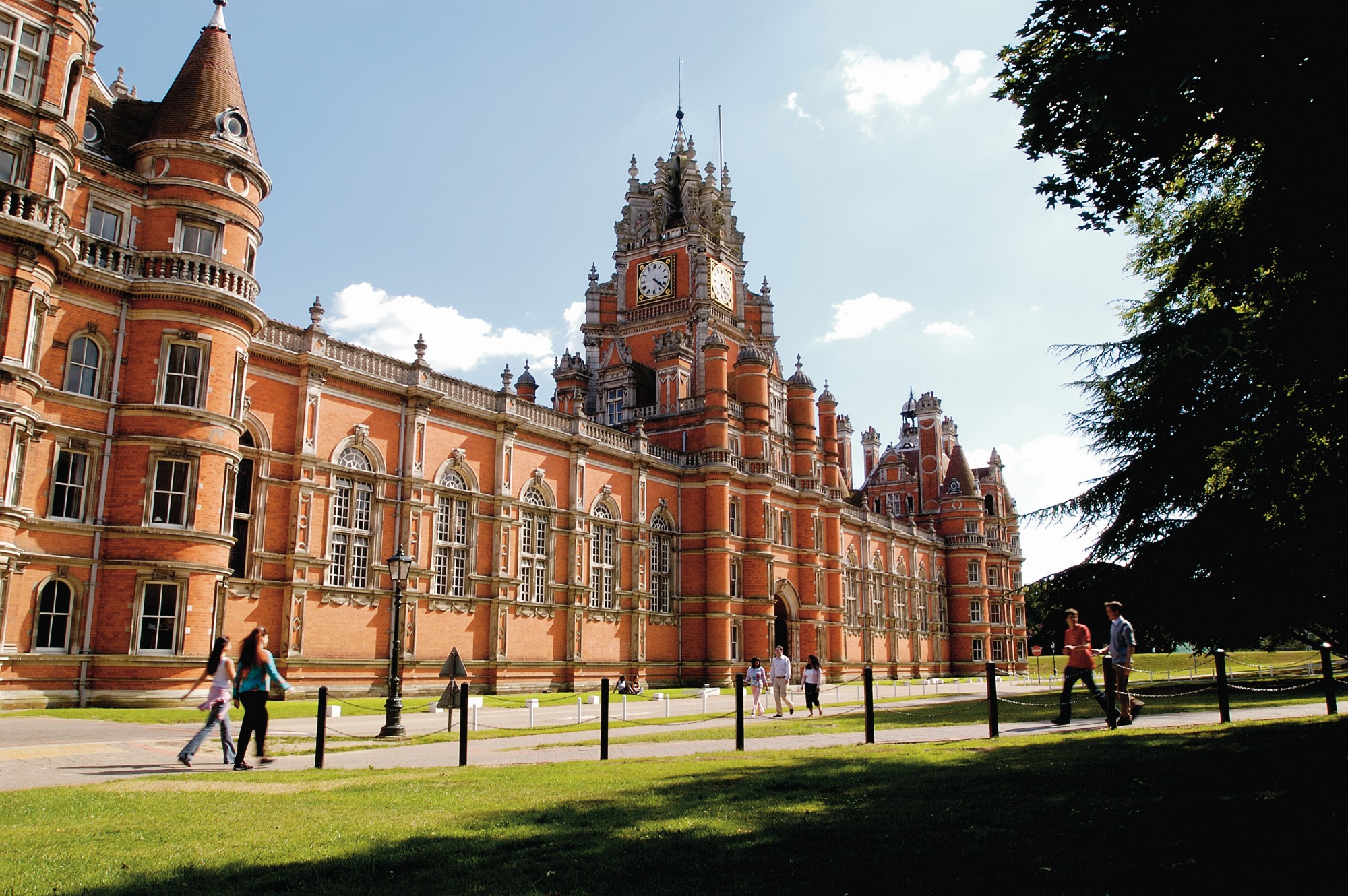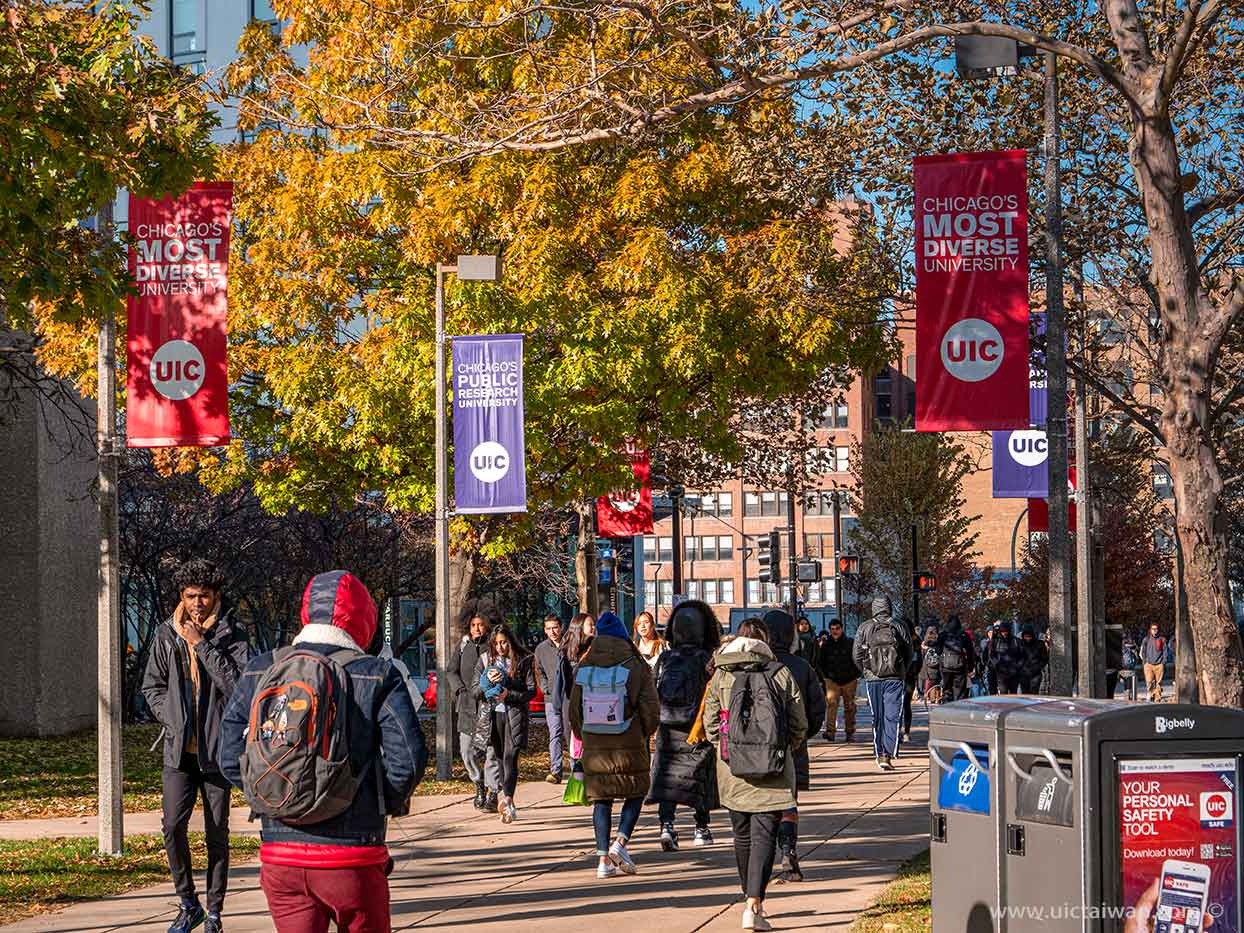
What is the first takeaway from studying in the U.S.? A wealth of new knowledge? No, it's culture shock! U.S. universities not only differ geographically from Taiwan by tens of thousands of miles, but their cultures are also worlds apart. Just like in Taiwan, students in the U.S. need to take courses and attend classes, but what are fraternities and sororities? Where do the unique university festivals come from? Besides studying, what activities should you join to fully enjoy your study abroad life?
University Activities in the U.S.: A Great Way to Expand Your Social Circle
In addition to wanting students to focus on academics, universities in the U.S. also expect students to get involved, as employers value practical experience over academic credentials. Therefore, schools often organize various activities for students to participate in, enriching their abilities beyond academics, such as:
 Various cultural lectures
Various cultural lectures
 Campus ambassadors welcoming visitors from other schools
Campus ambassadors welcoming visitors from other schools
 Dormitory parties gathering international and local students
Dormitory parties gathering international and local students
 Movie screenings and other cultural activities
Movie screenings and other cultural activities
For international students, these activities, which are not limited by identity or academic major, are a great first step in building a social circle. It's a good idea to try as many as possible. By paying attention to the information announced by the school, you won't miss the opportunity to make friends, helping you adapt to campus life in a foreign country more quickly.
In recent years, many schools have started organizing fun activities, such as the Krispy Kreme Challenge at North Carolina State University.
Krispy Kreme Challenge at North Carolina State University
Since 2004, North Carolina State University has hosted the Krispy Kreme Challenge every winter. Participants are required to run 2.5 miles (about 4 kilometers) from the starting point, eat 12 Krispy Kreme doughnuts, and then run 2.5 miles back to the original point, all within one hour. This event is not only fun, with many participants wearing funny and strange costumes (click here to review the 2020 event), but it also serves a charitable purpose: raising funds for the North Carolina Children's Hospital. According to the school, since its inception, the event has raised 1.93 million dollars for the hospital. Such a sweet and heartwarming event is a must-try if you have the chance to visit North Carolina State University.
University Clubs in the U.S.: Expanding Your Campus Life
Apart from university activities, another common and deeply integrated aspect of campus life is involvement in student clubs. University clubs in the U.S. are similar to those in Taiwan, where students with shared interests and goals gather to participate in activities. Common types of clubs include academic clubs, sports clubs, arts clubs, and more. Each school has its own unique traditions and characteristics based on student preferences.
However, the biggest difference between university clubs in the U.S. and Taiwan is the fraternity/sorority system. Men join fraternities, and women join sororities. The nature of both is the same, so for simplicity, we will refer to them as fraternities. Fraternities are prominent clubs in many U.S. universities, and many students aim to join a prestigious fraternity after enrolling. Fraternities are somewhat similar to high school alumni associations in Taiwan, where senior members take care of the juniors. Since fraternities are not officially affiliated with the school, each fraternity can set its own entry requirements and rituals, which strengthens the bonds among its members.
The reason U.S. college students are so eager to join fraternities is that the members can offer powerful networking and various resources. Many fraternities own their own houses, providing convenient accommodation for members, and the social events they frequently host also allow members to meet alumni and expand their networks. For example, Yale University's DKE fraternity has produced five U.S. Presidents, including both George H. W. Bush and George W. Bush.
Do not underestimate these student-organized clubs; if managed well, they can develop into world-class organizations, such as the world's largest student-run charity organization: THON.
THON Charity Club at Penn State University
THON, short for The Penn State IFC/Panhellenic Dance Marathon, is a charity club organized by students at Pennsylvania State University (Penn State). The vision of THON is to raise funds for children's cancer, including research funds and treatment costs, as well as organizing recreational activities for children with cancer. Every February, THON hosts a 46-hour continuous dance marathon, a large-scale event that attracts many people and sponsors each year, much like holding a grand carnival. If you enjoy dancing, consider visiting Penn State in February to check it out.
U.S. University Culture: A Basket of Oddities and Stories
The U.S. is home to many historically significant universities, each with its own unique traditions and fascinating cultures. Here are a few examples of schools with interesting stories and traditions that are worth your attention.
Dragon Day at Cornell University
As one of the Ivy League schools, Cornell University has over a century of history. Every March, first-year students in the Architecture Department create a dragon-shaped sculpture and parade it around campus, while students in the Engineering Department make a phoenix sculpture to engage in a symbolic battle with the dragon. In addition to the dragon sculpture, students dress in strange costumes and accompany the dragon as it tours the campus. This event is a great opportunity for Architecture and Engineering students to showcase their skills and for other students to let loose and celebrate. If you want to see the excitement of the 2019 event, check out the live stream from Cornell University at the time.
Mini 500 at Georgia Institute of Technology
The public Georgia Institute of Technology (Georgia Tech) is known for its engineering expertise, so it's no surprise that its traditional events are also related to engineering. Mini 500 is a tricycle relay race that has been held since 1969, where student teams of seven, four riders and three pit crew members, race around an eight-lap track using tricycles. There are also three pit stops for repairs during the race. Since the tricycles provided by the organizers are actually children's toys not suitable for adults, the students from the engineering departments must find ways to keep the tricycles running smoothly while racing to the finish line. Mini 500 is not unique to Georgia Tech; Indiana University also hosts a similar event, where over 100 participants race on tiny tricycles. The sight is both hilarious and worth watching.
Oozefest at the State University of New York at Buffalo
Studying abroad can be stressful, and what better way to relieve pressure than by throwing balls at others? And not just any balls, but volleyballs covered in mud! The State University of New York at Buffalo (SUNY Buffalo) has been hosting Oozefest, literally the "Mud Festival," every May since 1984 to help students relieve stress. Oozefest is not just for students; it is open to off-campus students, faculty, staff, alumni, and anyone else. Everyone gathers in a shallow pit filled with mud and plays volleyball, where no one cares about their attire or image; the goal is to smash the ball at the opposing team. It’s a great opportunity to let loose and relieve everyday stress!
Card Stunts at the University of California, Berkeley
The University of California, Berkeley (UC Berkeley), one of the top public universities in the U.S., was founded in 1868, and naturally has a variety of traditions to match its prestigious reputation. But did you know that the eye-catching "card stunt" performances seen at sports events originated from this world-renowned institution? In 1910, Berkeley students created a card stunt to cheer on their football team, arranging blue and gold cards in the stands to form the school's emblem and the letter "C," representing the university. Since then, card stunts have become a part of Berkeley’s tradition, and the school even has a Card Stunt Committee that provides the most impressive support whenever the school's teams are competing.
Life at U.S. schools is not only filled with academics but also various activities and fun. Many events are organized by students and gradually expand to be recognized by the school, becoming unique cultural traditions at each university. Taking part in these during your study abroad experience can certainly enrich your time overseas.



 Study Abroad in Different Countries
Study Abroad in Different Countries Popular Majors
Popular Majors Application Process
Application Process Study abroad exam
Study abroad exam Visa Application
Visa Application Study Abroad Life
Study Abroad Life








 Study in the USA
Study in the USA Study in Australia
Study in Australia Study in the UK
Study in the UK Study in the Netherlands/Ireland
Study in the Netherlands/Ireland Study in Canada
Study in Canada Conditional Admission
Conditional Admission



